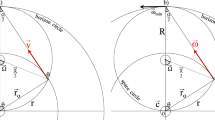Abstract
A LITTLE knowledge of spherical perspective would materially reduce the loss of life due to Zeppelins. There is no danger from a bomb dropped by one of these vessels unless the latter is approaching the zenith, and will reach there in a few seconds. If the Zeppelin appears inclined—that is, unless one end appears exactly over the other—there is no danger. This is easily seen at a glance, but a plumb-line formed by a stone attached to a string will show this with certainty. The Zeppelin will always pass on the side towards which the upper end points. If, however, it is vertical, and near the zenith, there is great danger. If its altitude is, for example, a mile, a bomb dropped would occupy 18 seconds in falling, if there were no air. Owing to the resistance of the latter, this time is greatly increased. It is only necessary to run at right angles to the apparent direction of the Zeppelin to be safe, even if one does not start until the bomb is dropped. This rule may be tested by standing under a telephone wire, which may be regarded as representing the path of the Zeppelin. A plumb-line will cover the wire only if the observer is exactly under the wire. No allowance is here made for the wind, which always carries the Zeppelin to leeward. It may be better, therefore, to stand so that the Zeppelin is partially covered by the edge of a house, a flagpole, or other vertical line. There is no danger unless the Zeppelin appears to ascend the line, remaining partially covered as it approaches the zenith. The same principles apply to aeroplanes. At sea, the vessel should take a course at right angles to the direction from which the Zeppelin comes. Of course, these methods are useless if the Zeppelin cannot be seen owing to clouds or darkness, unless it is picked up by a searchlight.
This is a preview of subscription content, access via your institution
Access options
Subscribe to this journal
Receive 51 print issues and online access
$199.00 per year
only $3.90 per issue
Buy this article
- Purchase on Springer Link
- Instant access to full article PDF
Prices may be subject to local taxes which are calculated during checkout
Similar content being viewed by others
Rights and permissions
About this article
Cite this article
PICKERING, E. Avoiding Zeppelins. Nature 97, 221–222 (1916). https://doi.org/10.1038/097221b0
Issue Date:
DOI: https://doi.org/10.1038/097221b0
Comments
By submitting a comment you agree to abide by our Terms and Community Guidelines. If you find something abusive or that does not comply with our terms or guidelines please flag it as inappropriate.



